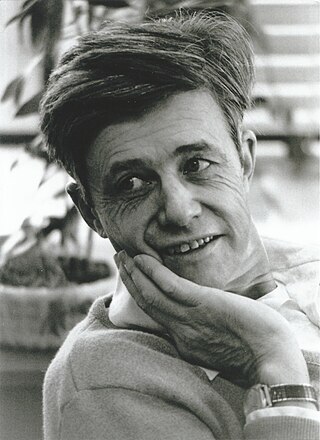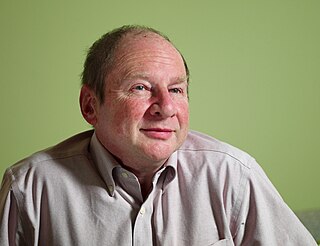Related Research Articles

APL is a programming language developed in the 1960s by Kenneth E. Iverson. Its central datatype is the multidimensional array. It uses a large range of special graphic symbols to represent most functions and operators, leading to very concise code. It has been an important influence on the development of concept modeling, spreadsheets, functional programming, and computer math packages. It has also inspired several other programming languages.

Computing is any goal-oriented activity requiring, benefiting from, or creating computing machinery. It includes the study and experimentation of algorithmic processes, and the development of both hardware and software. Computing has scientific, engineering, mathematical, technological, and social aspects. Major computing disciplines include computer engineering, computer science, cybersecurity, data science, information systems, information technology, and software engineering.
Computer programming or coding is the composition of sequences of instructions, called programs, that computers can follow to perform tasks. It involves designing and implementing algorithms, step-by-step specifications of procedures, by writing code in one or more programming languages. Programmers typically use high-level programming languages that are more easily intelligible to humans than machine code, which is directly executed by the central processing unit. Proficient programming usually requires expertise in several different subjects, including knowledge of the application domain, details of programming languages and generic code libraries, specialized algorithms, and formal logic.

Computer science is the study of computation, information, and automation. Computer science spans theoretical disciplines to applied disciplines.
In computer science, functional programming is a programming paradigm where programs are constructed by applying and composing functions. It is a declarative programming paradigm in which function definitions are trees of expressions that map values to other values, rather than a sequence of imperative statements which update the running state of the program.

A programming language is a system of notation for writing computer programs.
In computing, a virtual machine (VM) is the virtualization or emulation of a computer system. Virtual machines are based on computer architectures and provide the functionality of a physical computer. Their implementations may involve specialized hardware, software, or a combination of the two. Virtual machines differ and are organized by their function, shown here:
ISWIM is an abstract computer programming language devised by Peter Landin and first described in his article "The Next 700 Programming Languages", published in the Communications of the ACM in 1966.

Kenneth Eugene Iverson was a Canadian computer scientist noted for the development of the programming language APL. He was honored with the Turing Award in 1979 "for his pioneering effort in programming languages and mathematical notation resulting in what the computing field now knows as APL; for his contributions to the implementation of interactive systems, to educational uses of APL, and to programming language theory and practice".

Guy Lewis Steele Jr. is an American computer scientist who has played an important role in designing and documenting several computer programming languages and technical standards.
Theoretical computer science is a subfield of computer science and mathematics that focuses on the abstract and mathematical foundations of computation, such as the theory of computation, formal language theory, the lambda calculus and type theory.

Harold Abelson is an American mathematician and computer scientist. He is a professor of computer science and engineering in the Department of Electrical Engineering and Computer Science at the Massachusetts Institute of Technology (MIT), a founding director of both Creative Commons and the Free Software Foundation, creator of the MIT App Inventor platform, and co-author of the widely-used textbook Structure and Interpretation of Computer Programs, sometimes also referred to as "the wizard book."
MultiLisp is a functional programming language, a dialect of the language Lisp, and of its dialect Scheme, extended with constructs for parallel computing execution and shared memory. These extensions involve side effects, rendering MultiLisp nondeterministic. Along with its parallel-programming extensions, MultiLisp also had some unusual garbage collection and task scheduling algorithms. Like Scheme, MultiLisp was optimized for symbolic computing. Unlike some parallel programming languages, MultiLisp incorporated constructs for causing side effects and for explicitly introducing parallelism.
ALGOL 58, originally named IAL, is one of the family of ALGOL computer programming languages. It was an early compromise design soon superseded by ALGOL 60. According to John Backus:
The Zurich ACM-GAMM Conference had two principal motives in proposing the IAL: (a) To provide a means of communicating numerical methods and other procedures between people, and (b) To provide a means of realizing a stated process on a variety of machines...

Barbara Liskov is an American computer scientist who has made pioneering contributions to programming languages and distributed computing. Her notable work includes the introduction of abstract data types and the accompanying principle of data abstraction, along with the Liskov substitution principle, which applies these ideas to object-oriented programming, subtyping, and inheritance. Her work was recognized with the 2008 Turing Award, the highest distinction in computer science.

Racket is a general-purpose, multi-paradigm programming language. The Racket language is a modern dialect of Lisp and a descendant of Scheme. It is designed as a platform for programming language design and implementation. In addition to the core Racket language, Racket is also used to refer to the family of programming languages and set of tools supporting development on and with Racket. Racket is also used for scripting, computer science education, and research.

Programming language theory (PLT) is a branch of computer science that deals with the design, implementation, analysis, characterization, and classification of formal languages known as programming languages. Programming language theory is closely related to other fields including mathematics, software engineering, and linguistics. There are a number of academic conferences and journals in the area.
References
- ↑ Evans, Arthur Jr. (February 1968). "PAL: Pedagogic Algorithmic Language: A Reference Manual and a Primer" (PDF). Computer History Museum: Software Preservation Group. Mountain View, California: Department of Electrical Engineering, MIT . Retrieved 10 November 2022.
- ↑ John M. Wozencraft and Arthur Evans, Jr. Notes on Programming Linguistics. Unpublished report, Department of Electrical Engineering, MIT. February, 1971.
- ↑ Arthur Evans, Jr., "PAL—a language designed for teaching programming linguistics" Proceedings of the 1968 23rd ACM National Conference (August 27–29, 1968), p. 395-403 ACM abstract
- ↑ "PAL (Pedagogic Algorithmic Language)". Computer History Museum/Software Preservation Group.
- ↑ "RPAL - The Right-reference Pedagogic Algorithmic Language". SourceForge.